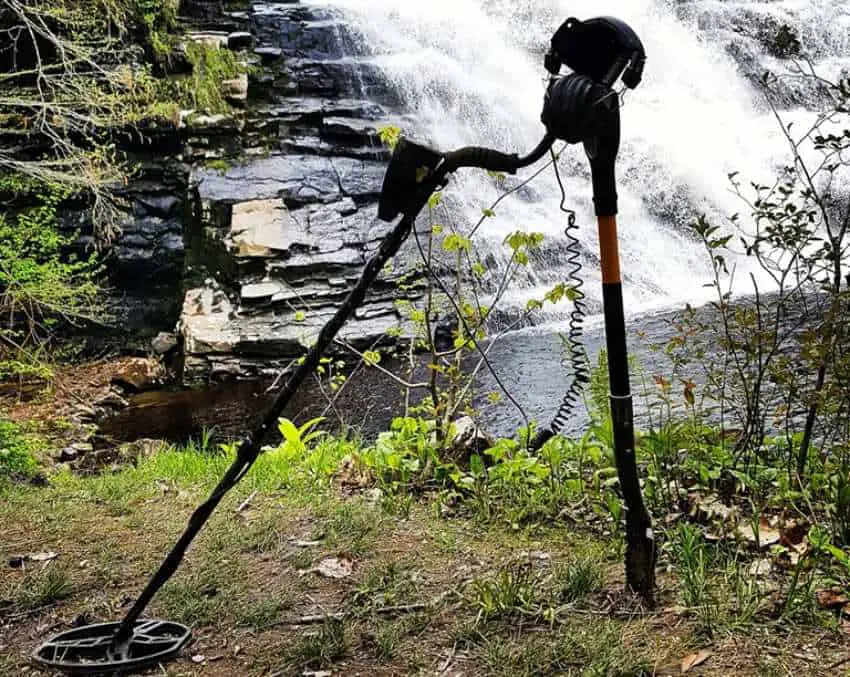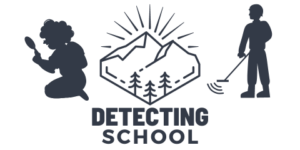
North Dakota, is certainly a beautiful state that’s worth exploring with your metal detector!
However, you should pay a little bit attention to the rules, so you will always stay in the safe side and still manage to enjoy the hobby and come with some unique finds …
… In this very short post, I explain the main rules to watch out for, and also I address several fun and useful topics that you should probably know …
… Hope you will like it!
What are the metal detecting laws in North Dakota?
The Antiquities Act of 1906 is what generally governs the hobby in this state! It is essential that you are aware of the provisions under this law because many detectorists who have broken the law in North Dakota have gotten arrested and also fined. In some cases, their metal detector gets also confiscated.
One of the biggest challenges in this state is the destruction and removal of Native American artifacts and desecration of their burial grounds. Due to this, government authorities are very strict with the rules and regulations and do not hesitate before taking action.
Apart from the Antiquities Act, the hobby in there is also governed by the National Historic Preservation Act (NHPA), especially when it comes to detecting on state land.
As per the NHPA, you should not dig up anything that you believe is an artifact or any item that is likely to be older than 100 years!
To use a detection device on a private property, you ultimately need to get written permission from the landowner.
Also, to explore any town, village, city parks, you will need to check in with the local officials to understand what the specific regulations are for each place.
At the same time, it is illegal to detect on any land and water bodies under the Bureau of Reclamation. It is also unlawful to do so at any national monument, national park, or at any recreational area that is of archaeological significance!
Where to detect in North Dakota?
The lush woodlands, rugged landscape, and the water-fed natural resources are the perfect landscape for detection hobbyists!
The state also has a rich and fascinating history, and you will get an ample amount of opportunities to spend time outdoors with your beloved machine at places such as Lake Sakakawea or the Theodore Roosevelt National Park.
Some of the best places you may want to explore include (Please make sure that no Permit is required beforehand, otherwise, please get the necessary premises before targeting any of these places):
- Theodore Roosevelt National Park
- Lake Sakakawea
- Frontier Village
- Maah Daah Hey Trail
- Devil’s Lake
- Chateau De Mores
- Ruins of Fort Abercrombie
- Fort Dilts
There are also many ghost towns in there that are ideal spots … Some of the best ghost towns to target include:
- Arena
- Tagus
- Carbury
- Ghost Town of Bartlett
- Sherbrooke
- Hartland
- Wheelock
- Omemee
- Charbonneau
- Temple
- Freda
- Verendrye
- Temvik
You should use this Detector for North Dakota Soil!

Williams soil is the predominant type of soil found across North Dakota, and it is also the official state soil …
… This type is also the most economically important soil in the state. These soils are primarily used as cropland.
In such type of organic soil, one of the best detectors to use would be the Garrett AT Max (Check it Here at Amazon).
It comes with additional features over the notorious AT Pro … Indeed, detectorists who have used the AT Pro before would find the AT Max as an excellent upgrade for their hobby.
Even for those who have not tried the AT Pro before, AT Max is going to prove to be the most versatile and advanced all-terrain VLF metal detector.
Some of the features of this fully waterproof device include:
- Z-lynk wireless audio
- True all-metal mode
- Improved electronics to allow for greater depth
- Iron audio
- Digital target ID
- Both automatic and manual ground balance
At the same time, with so many advanced features, the machine is still easy to use and does not limit detectorists who want to have higher control over the device’s performance.
AT Max weighs at just 3.03 lbs, is powered by four AA batteries, and also has a built-in pinpointing mode.
Finally, if this machine’s price is above your current budget, then you can still Check this Cheaper model Here at Amazon! It is an easy to use and all terrain Fisher device …
Prospecting for Gold in North Dakota …
There has not been any noteworthy discovery of gold in this state. This is perhaps because there is not enough gold for a profitable commercial mining operation in the state.
In addition, there have been some reports of gold being found with a metal detector in Bowmont County at Deep Creek, but again the amount was not too significant.
Gold has been found near the Sheyenne River, expected to be coming down from the Black Hills of South Dakota (Learn more about metal detecting in South Dakota). The gold found here is typically in cemented gravels and believed to be leftover from the receding glaciers.
There has also been some documented discovery of gold at approximately six miles to the north of Fort Ransom.
While there is no fortune to be made from gold hunting in North Dakota, you can still go around with your detector and give it a try.
Other finds to expect there?
Native American relics, jewelry, modern and ancient coins, and many other types of relics can be expected to be found in there!
North Dakota is also known for finds of rare earth elements. These finds are particularly common in the western part of the state and the area that surrounds it. Elements such as scandium and terbium oxide that are worth hundreds of dollars.
Some more exciting finds you can expect to find in North Dakota are the many lost treasures across the state…
- Ruins of Fort Abercrombie: It is believed that the Sioux Indians buried their belongings and caches of treasure in the fort when they attacked the fort.
- Fort Dilts: Built in 1864, it is believed that there is a Native Indian treasure buried in Fort Dilts.
- Ghost Town of Bartlett: The ghost town of Bartlett is located a mile north of the state route 2, nearly four miles west of Lakota. Once a popular railroad town and the ruins of the city are still standing today. There are small and large treasures said to be located in and around this ghost town.
- Belmont: A river port, Belmont, was once destroyed by a flood. When the flood happened, many safes containing large amounts of money were said to have swept away into the river. Searching the river with a waterproof metal detector such as the AT Max could be a good idea to bring you closer to finding these treasures.
Exploring North Dakota Rivers!
There is no doubt that rivers, in many cases, could be the most rewarding places in terms of potential finds! There are ample opportunities to find something valuable in the many rivers that flow across North Dakota.
Not only are rivers great places to have a fun day out with your detector, but many times they can yield some exciting finds as well.
You can check any of these rivers:
- Little Missouri
- Sheyenne
- Little Muddy
- Wild Rice
- Des Lacs
- James
- Pembina
- Souris
- Maple
- Red River of the North
- Cannonball
- Tongue
Are there detection clubs in there?
The hobby is not very popular in there as of yet … Due to this, there is a lack of related clubs in the state. The only known detecting club is the Minnkota Artifact Recovery Group.
If you are looking to find like-minded people in there, then searching on online forums would be a better option.
You can also connect some facebook groups out there!
Detecting in North Dakota Parks!
… North Dakota Administrative Code Title 58 Article 2 Chapter 8 Section 16 holds quote, “No person may use any device for the purpose of locating or removing any metallic object or any other objects of value from a state park. Exceptions may be made by the director for approved archaeological surveys or law enforcement personnel. Use of a metal detector to find a lost item may be allowed under the direct supervision of park staff. Any person who violates this subsection is guilty of a class 1 noncriminal offense.” This is a law that has been in effect since 1987.
Getting your Permit …
The North Dakota Parks and Recreation Department issues no sort of metal detecting permit. Now on rare occasion it has occurred that the department leadership has deemed it necessary to metal detect at our parks. In these cases however, we contract professionals to perform the metal detecting. This is not something ever available to the general public.
Conclusion
Since the hobby is not extremely popular in there, I really didn’t feel motivated to Publish this Post … However, I’ve thought that for sure there are people looking for such information even if they are not that much …
… Thus, it was worth my time to serve these people with this little piece of content!
However, if you are looking for states where the hobby is quite popular, then have a look at New Jersey.
Anyway, really hope it provides you with some useful value!
I’ve recently written this article on detecting in India! I believe that you will find it useful if you intent to go there …
